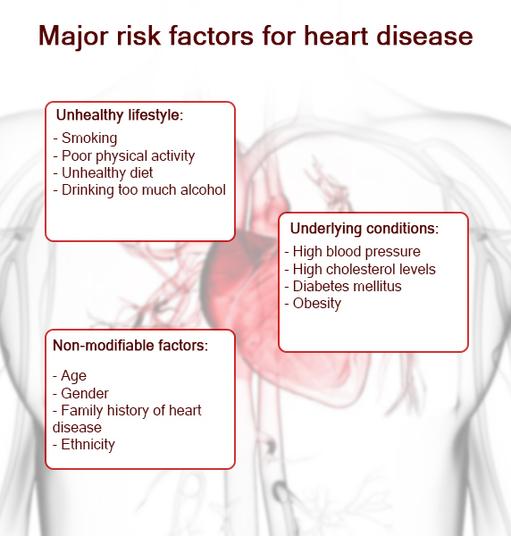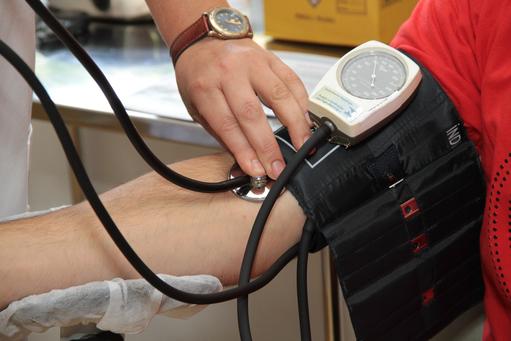Directory

David Murray
Consultant Vascular SurgeonMr David Murray is a highly accomplished vascular surgeon who began his surgical training in the North West of England. After completing his training, he gained further expertise as a Senior Clinical and Endovascular Fellow at the renowned John Hunter Hospital in Newcastle, Australia. Upon his return to the UK in 2010, Mr Murray took up the position of Consultant Vascular Surgeon at Manchester Royal Infirmary, where he continues to make significant contributions to the field.
Currently, Mr Murray serves as the Clinical Head of the Cardiovascular Division at Manchester Royal Infirmary. His practice, spanning both NHS and private sectors, covers all areas of modern vascular surgery. However, his particular area of expertise lies in the repair of complex aneurysms, a field in which he has earned a distinguished reputation.
view this profile
Directory:
Tags:

New York Cardiac Diagnostic Center has built a reputation as a cardiac center of excellence in heart screening NYC for the assessment and diagnosis of patients with all forms of cardiac ailments. Top cardiology doctors in NYC offer an unrivaled service allied with state of the art equipment and heart doctors who are among the best in their fields.
What Is Cardiac Screening?
Cardiac screenings are various heart tests performed in order to discover different types of heart problems before the symptoms begin. The purpose of heart screening is to discover disease in their earliest stage when it’s still possible to treat or prevent them. Cardiovascular screening for heart disease may include tests to check your blood and other fluids, tests to discover inherited genetic markers associated with heart ailments, and imaging tests for the heart.
Today, the leading cause of death worldwide is cardiovascular disease with over 17 million deaths each year. The American Heart Association is predicting that this trend will continue to increase. In the US alone, at least one person dies every 40 seconds due to heart issues. Cardiac screening tests are designed to greatly decrease the death rate through early detection and prevention.
We use the most advanced diagnostic equipment available for cardiac screenings, diagnosis, and treatment planning.
New York Cardiac Diagnostic Center
115 East 86th Street
New York, NY 10028
(212) 860–0796
Web Address: https://newyorkcardiac.com/
Our locations on the map:
https://g.page/Cardiologist-Upper-East-Side-NYC
https://plus.codes/87G8Q2JV+2G New York
Nearby Locations:
Upper East Side
Yorkville | Manhattan | Lenox Hill | Carnegie Hill | East Harlem
10028, 10075, 10128 | 10021 | 10029 | 10035
New York Cardiac Diagnostic Center
200 West 57th Street, Suite 200
New York, NY 10019
(212) 582–8006
Our locations on the map:
https://g.page/New-York-Cardiology-Midtown-NYC
https://plus.codes/87G8Q289+5Q New York
Nearby Locations:
Midtown
Hell`s Kitchen | Little Brazil | Lenox Hill | Diamond District
10019 | 10036 | 10021 | 10017
New York Cardiac Diagnostic Center
65 Broadway Suite 1806
New York, NY 10006
(212) 860–5404
Our locations on the map:
https://g.page/New-York-Cardiology-Downtown-NYC
https://plus.codes/87G7PX4Q+W2 New York
Nearby Locations:
Financial District / Wall Street
World Trade Center | Two Bridges | Tribeca | Lower East Side
10007 | 10002 | 10003, 10009
Working Hours:
Monday: 8 am — 5 pm
Tuesday: 8 am — 5 pm
Wednesday: 8 am — 5 pm
Thursday: 8 am — 5 pm
Friday: 8 am — 5 pm
Saturday: Closed
Sunday: Closed
Payment: cash, check, credit cards.

Sriram Narayanan
Dr.Besides medicine, Dr. Narayanan enjoys music, cricket and world history and politics. He credits his father’s extraordinary sense of fairness and respect for others, and Professor Alun Davies’ inspiration for teaching, research and helping patients as his biggest influences. Dr. Narayanan’s mission is to develop accessible treatment for all as the costs of medicine have left the less privileged behind due to technology and knowledge advances in healthcare. He believes in treating patients as people with fears and hopes and not just as a collection of symptoms and x-ray films.
view this profile

Aadicura Hospital
Aadicura Superspeciality Hospital Vadodara
Aadicura hospital is one of the best super-specialty hospitals in Vadodara where, doctors of a world-class repute who believe in Putting Patients First , have decided to join hands to bring the best of healthcare facilities under one roof.
Aadicura Superspeciality Hospital
multispeciality hospital vadodara
multispeciality hospital in baroda
superspeciality hospital in vadodara
Aadicura Superspeciality Hospital
Aadicura Hospital
Aadicura Hospital vadodara
Aadicura Superspeciality Hospital Vadodara
aadicura super speciality hospital
view this profile

Namrata Khimani
Dr.With double Board-certification, Dr. Khimani brings impeccable credentials to Vein Institute & Pain Centers of America. Her focus is on pain management and venous medicine. Dr. Khimani strives to improve quality of life and functional goals for patients. She accomplishes it with comprehensive, evidence-based care. Her concentration is on minimally invasive treatments for chronic venous insufficiency, and acute and chronic pain conditions.
view this profile
Dr. Michael Nguyen is world renowned in venous medicine. Dr. Nguyen completed his residency and advanced fellowship training at Harvard Medical School. During his tenure at Harvard, Dr. Nguyen was awarded the “Mentor of the Year” and also “Teacher of the Year” award. Dr. Michael Nguyen is board certified by the American Board of Venous and Lymphatic Medicine, a rigorous certification granted to less than 1% of doctors practicing Venous Medicine.
Get more information about Dr. Michael Nguyen
Area of Expertise
- Venous Medicine
- Interventional Pain Management
- Minimally Invasive Cosmetics
- Training
Training
- Havard Medical School: Brigham and Women’s Hospital
- University of Miami
view this profile
Directory:
Tags:

|

Ramesh Tripathi
Senior Consultant Vascular & Endovascular SurgeonDirectory:
Expertise:
Prof. Ramesh Tripathi is currently the Clinical Director of Narayana Institute of Vascular Sciences at Narayana Hrudayalaya Health City, Bangalore, India.
His experience as a Consultant Vascular Surgeon spans over 19 years during which he has performed in excess of 9000 Vascular, 7000 endovascular procedures and 1400 Endovenous Laser treatments of varicose veins.
He has trained, worked, collaborated and tutored at leading Universities and hospitals internationally including USA, UK, Germany, India, Australia and New Zealand. He is credited for performing India’s first Endovascular repair of Abdominal Aortic Aneurysm in 1997 followed by India’s first Thoracic Aortic Aneurysm repair in 1998.
He also performed the first Implant of Medtronic Xcelerant AAA stent graft in Australia and New Zealand at Wellington Hospital, New Zealand on June 2005. He has since then performed over 900 Endovascular and hybrid repairs of Thoracic and Abdominal Aortic Aneurysms.
He is the first Vascular Surgeon from India to be honored as a Distinguished Fellow of Society of Vascular Surgery. He is an internationally renowned leading opinion maker in Vascular and Endovascular Surgery, who has made significant pioneering contributions to innovative, minimally invasive and new advances in Endovascular Surgery especially in the areas of Treatment of Thoracic and Abdominal Aortic Aneurysms for his innovative experimental work on in-situ fenestration of thoracic stent-grafts and Deep Venous Valve Surgery.
He is a Faculty and Speaker at many international Vascular Conferences for numerous years including VEITH Symposium, Charing Cross Symposium, European Vascular Course, ISET, American Venous Forum, Aristotle Vascular Experts’ Meeting, Australian and New Zealand Society of Vascular Surgery, Asian Society of Vascular Surgery, Sicilian Vascular Symposium, Aorta Italy, CICE Brazil, International Congress of Endovascular Interventions Arizona, New Zealand Society of Vascular Surgery and Vascular Society of India.
In India, his research interests revolve around endovascular treatments and genetics of Aortic Aneurysms, bioabsorbable Polymer stents and biology of leg ulceration. He is the Editor in Chief of Indian Journal of Vascular Surgery and a member of the editorial boards of Phlebology, Vascular Disease Management, AORTA and Venous Forum of American College of Phlebology. He reviews publications for 9 Journals.
view this profile





